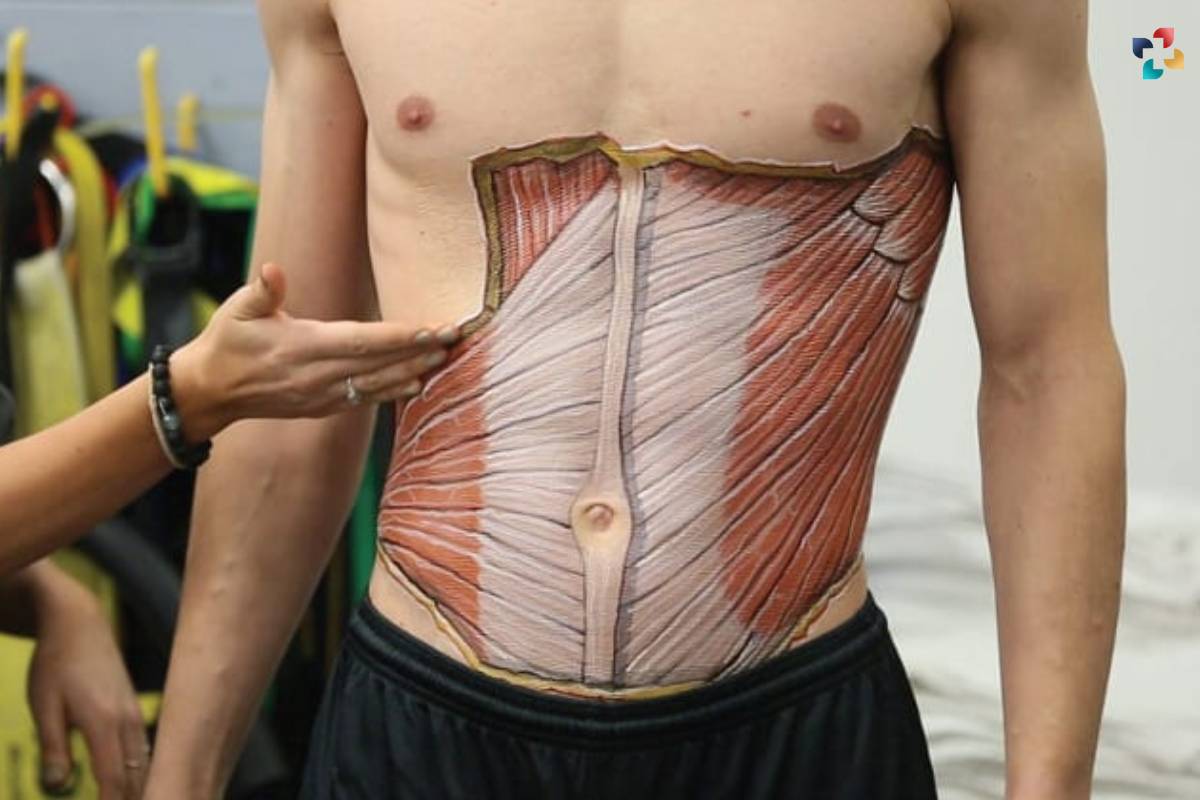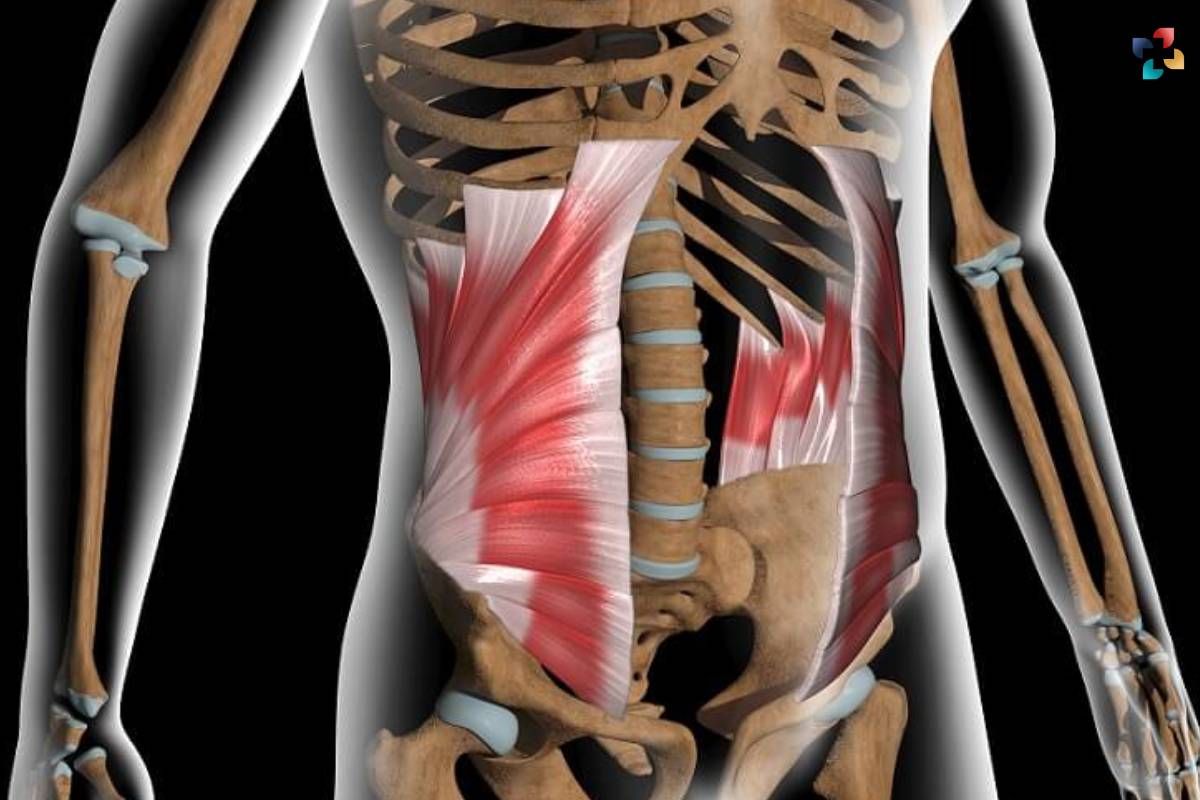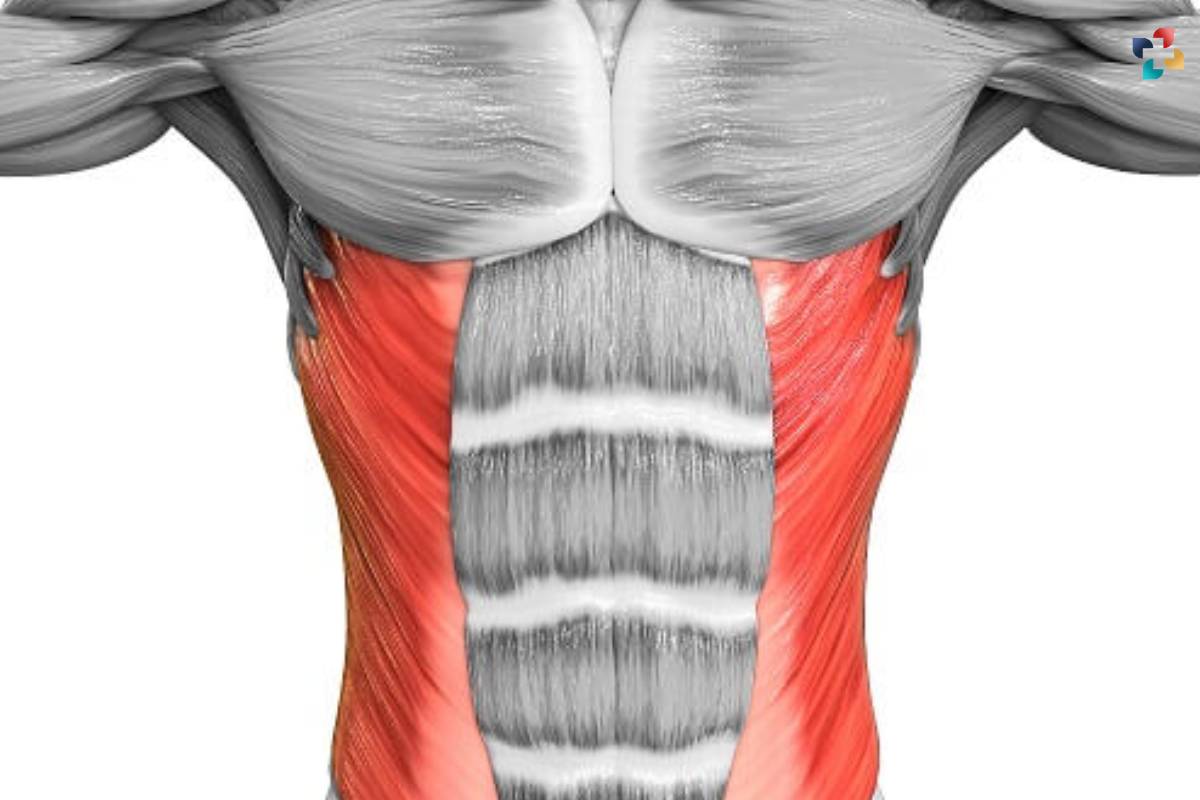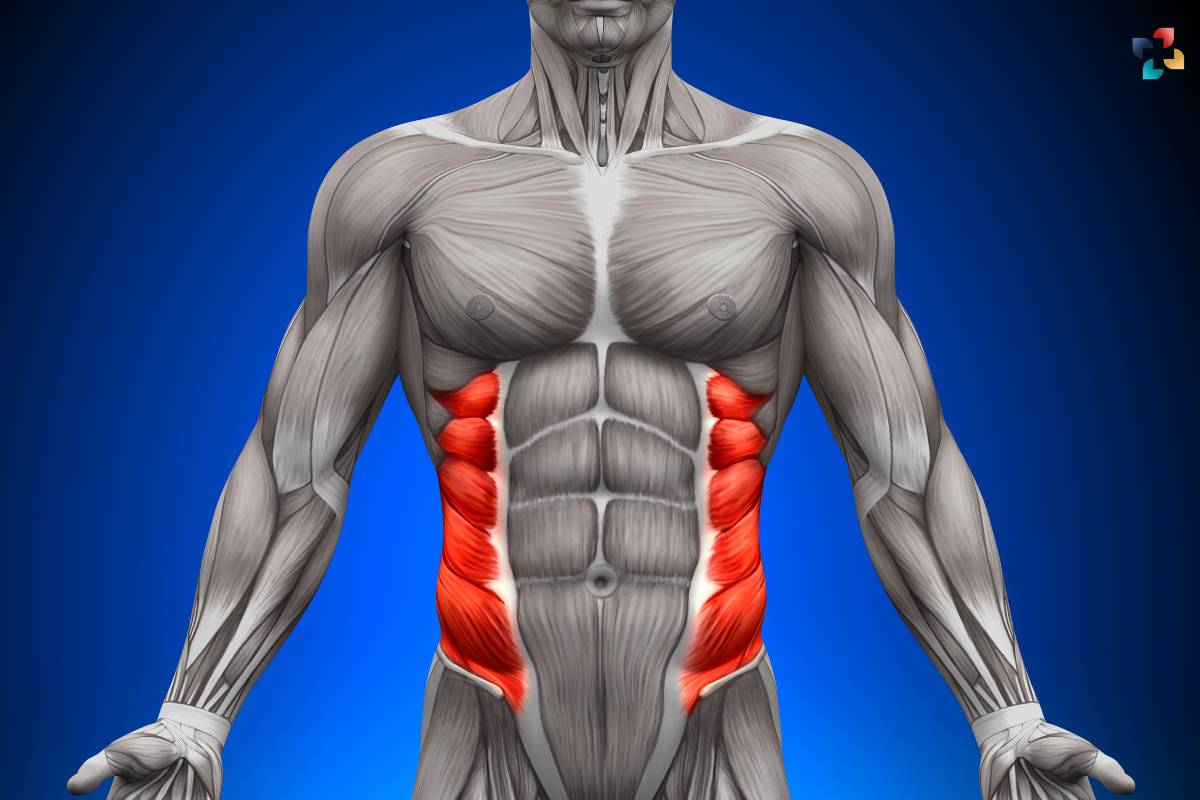The external abdominal oblique muscle is a crucial component of the core musculature, playing a significant role in trunk stability, posture, and movement. In this comprehensive guide, we delve into the anatomy, function, and exercises targeting the external abdominal oblique to help you better understand and strengthen this vital muscle.
Anatomy of the External Abdominal Oblique:
The external abdominal oblique is one of the four muscles that make up the abdominal wall, along with the internal abdominal oblique, transversus abdominis, and rectus abdominis. It is the largest and most superficial of the abdominal muscles, located on the lateral and anterior sides of the abdomen. Originating from the lower eight ribs, it runs diagonally downward and forward, inserting into the linea alba, pubic tubercle, and anterior half of the iliac crest.
The external abdominal oblique muscle is a broad, fan-shaped muscle that forms the outermost layer of the lateral abdominal wall. Its fibers run obliquely, which means they angle downward and toward the midline of the body. This orientation allows the muscle to contribute to a variety of movements and functions, including trunk flexion, rotation, and lateral bending.

Originating from the lower eight ribs, the external abdominal oblique muscle attaches along the external surface of these ribs, spanning from the fifth to the twelfth ribs. From its origin, the muscle fibers converge and course diagonally downward and forward, forming a broad muscle mass that covers much of the lateral and anterior aspects of the abdomen. As the muscle fibers approach the midline of the body, they merge into a dense connective tissue band known as the aponeurosis, which contributes to the formation of the linea alba.
At its distal end, the external abdominal oblique muscle inserts into several structures, including the linea alba, pubic tubercle, and anterior half of the iliac crest. The linea alba is a tough, fibrous band of connective tissue that runs vertically along the midline of the abdomen, serving as an attachment site for several abdominal muscles. The pubic tubercle is a small bony prominence located at the front of the pelvis, while the iliac crest is the curved ridge of bone that forms the upper border of the hip bone.
In addition to its primary role in trunk movement and stability, the external abdominal oblique muscle also plays a significant role in protecting the abdominal organs and maintaining intra-abdominal pressure. During activities such as coughing, sneezing, or lifting heavy objects, the muscle contracts to increase abdominal pressure, providing support and stability to the spine and pelvis. This function helps prevent injury and supports efficient movement and posture in various activities of daily living.
The function of the External Abdominal Oblique:

The primary function of the external abdominal oblique is to flex and rotate the trunk, as well as to compress the abdominal contents. When both sides contract simultaneously, they produce forward flexion of the trunk, such as during sit-ups or crunches. Additionally, when only one side contracts, it initiates lateral flexion and rotation of the trunk. This muscle also provides stability to the lumbar spine and pelvis during various movements and activities.
Exercises to Target the External Abdominal Oblique:
1. Side Plank
The side plank is an excellent exercise for targeting the external abdominal oblique, as it requires stabilization of the trunk while lifting the hips off the ground. Start by lying on your side with your elbow directly beneath your shoulder and your legs stacked. Lift your hips off the ground, forming a straight line from head to heels, and hold for the desired duration.
2. Bicycle Crunches
Bicycle crunches engage both the external and internal obliques, along with the rectus abdominis. Begin by lying on your back with your hands behind your head and knees bent. Lift your shoulder blades off the ground and bring your right elbow towards your left knee while straightening your right leg. Alternate sides in a pedaling motion.
3. Russian Twists
Sit on the ground with your knees bent and feet elevated. Lean back slightly and clasp your hands together in front of your chest. Rotate your torso to the right, bringing your hands towards the ground beside your hip. Return to the center and repeat on the left side.
Targeting the external abdominal oblique muscles through specific exercises is crucial for enhancing core strength, stability, and overall functional fitness. These muscles play a vital role in trunk rotation, lateral bending, and maintaining proper posture, making them essential for everyday movements and athletic performance. Strengthening the external obliques not only improves aesthetic appearance by sculpting the waistline but also helps prevent lower back pain and reduces the risk of injury during physical activities.

Incorporating exercises that target the external abdominal oblique muscles into your workout routine can lead to several benefits. By strengthening these muscles, you can improve your ability to perform rotational movements, such as twisting and turning, which are common in sports and daily activities. Additionally, a strong and stable core can enhance athletic performance in activities like golf, tennis, and martial arts, where rotational power is essential.
Moreover, strong external obliques contribute to better posture and spinal alignment, reducing the risk of lower back pain and injury. Whether you’re sitting at a desk, standing for long periods, or engaging in physical labor, a strong core provides the support and stability needed to maintain proper body mechanics and prevent discomfort or strain. By targeting the external abdominal oblique muscles with specific exercises, you can optimize core strength and function, leading to improved overall health and fitness.
Conclusion:
The external abdominal oblique is a crucial muscle for trunk stability, posture, and movement. By understanding its anatomy and function, as well as incorporating targeted exercises into your fitness routine, you can strengthen this muscle and improve overall core strength and stability. Remember to consult with a fitness professional before beginning any new exercise program, especially if you have existing medical conditions or injuries.
External Abdominal Oblique Muscles (3D Animation)
FAQs
1. What is the external abdominal oblique, and what is its function?
The external abdominal oblique is a large muscle located on the lateral and anterior sides of the abdomen. Its primary function includes trunk rotation, lateral bending, and stabilization of the spine.
2. How can I strengthen my external abdominal oblique muscles?
You can strengthen your external oblique muscles through various exercises such as side bends, oblique crunches, Russian twists, bicycle crunches, and woodchoppers.
3. Can weak external oblique muscles contribute to lower back pain?
Yes, weak external oblique muscles can contribute to lower back pain as they play a crucial role in providing stability to the spine and pelvis. Strengthening these muscles can help alleviate discomfort and prevent future injury.
4. Are there any exercises to avoid if I have a weak external abdominal oblique?
Exercises that involve heavy lifting or twisting motions without proper form should be avoided if you have a weak external abdominal oblique. It’s essential to focus on exercises that target the oblique muscles while maintaining proper alignment and technique.
5. How often should I train my external abdominal oblique muscles?
It is recommended to incorporate exercises targeting the external obliques into your workout routine 2-3 times per week, allowing for adequate rest and recovery between sessions. Consistency and progression are key to effectively strengthening these muscles.











